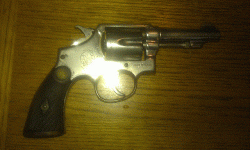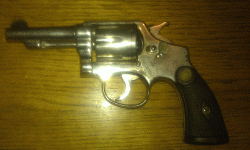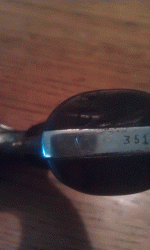Smackblood
Inactive
My dad just bought an older Smith & Wesson that has no model number on it. I looked it up in my Blue Book and at first determined it to be a Model 1905 4th Change but then I realized it is something called the Victory Model,which is basically a 1905 - 4th with a "V" before the serial number.
This gun shoots a .38 Smith &Wesson (not Special) and the serial number is in the 351xxx range. The problem is, it has a 3 1/2" barrel and is Stainless (or possibly nickel?) As far as I can tell, the Victory model did not come in Stainless or Nickel and from what my book tells me, there has NEVER been a .38 Smith and Wesson revolver with a 3 1/2" barrel.
I'm just curious about what exactly this gun is. Is it super rare? A fake, maybe? I can't see why someone would go through so much trouble to fake a $700 gun and then do it wrong anyway. It doesn't look like the barrel has bee modified in any way.
Here are some pictures, any help is appreciated
This gun shoots a .38 Smith &Wesson (not Special) and the serial number is in the 351xxx range. The problem is, it has a 3 1/2" barrel and is Stainless (or possibly nickel?) As far as I can tell, the Victory model did not come in Stainless or Nickel and from what my book tells me, there has NEVER been a .38 Smith and Wesson revolver with a 3 1/2" barrel.
I'm just curious about what exactly this gun is. Is it super rare? A fake, maybe? I can't see why someone would go through so much trouble to fake a $700 gun and then do it wrong anyway. It doesn't look like the barrel has bee modified in any way.
Here are some pictures, any help is appreciated



